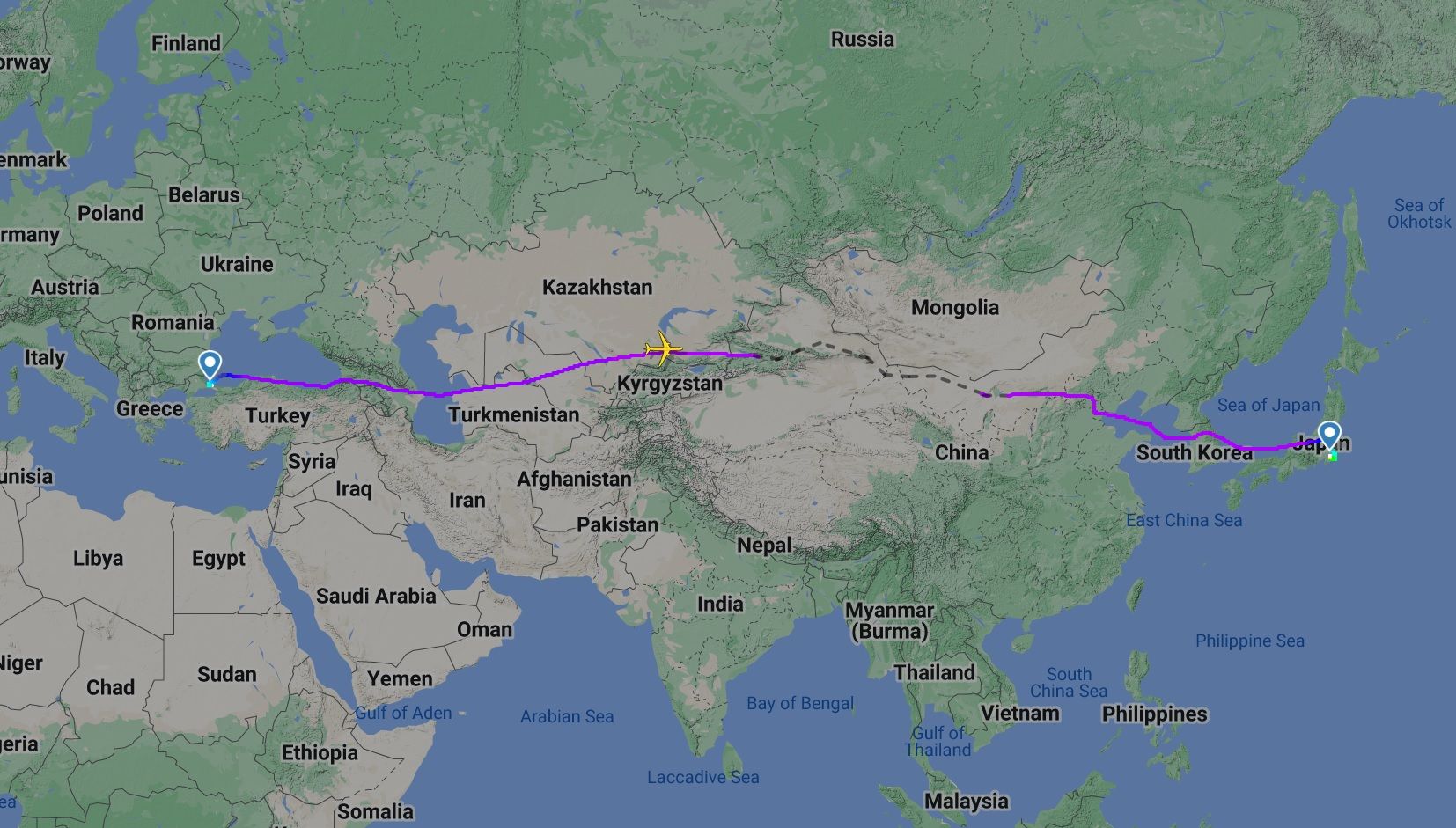On December 15th, Turkish Airlines reintroduced Istanbul Airport to Tokyo Narita after last serving the route in March 2020. The return inevitably followed Japan's reopening to the world. As it added Haneda in 2020, it is the first time the Star Alliance member has served Narita and Haneda simultaneously, at least with passenger flights. Turkish Airlines now serves Tokyo 10 weekly with up to 2 daily flights. It last had 2 daily flights (not every day) almost seven years ago, in early 2016.
Turkish Airlines is back in Narita
The 3 weekly service uses 300-seat 787-9s, with 30 fully flat business seats and 270 seats in economy seats. It is scheduled as follows, with all times local. For completeness and context, I've included Haneda's timings too.
- Istanbul to Tokyo Haneda: TK198, 02:50-19:45 (10h 55m block), 1x daily ← existing; B777-300ER
- Istanbul to Tokyo Narita: TK50, 14:55-07:50+1 (10h 55m), 3x weekly; B787-9
- Tokyo Narita to Istanbul: TK51, 09:45-17:20 (13h 35m), 3x weekly; B787-9
- Tokyo Haneda to Istanbul: TK199, 22:50-06:25+1 (13h 35m), 1x daily ← existing; B777-300ER
You'll notice that Narita is timed very differently from Haneda. Narita is contributing to Turkish Airlines' new wave of Far East flights, something the airline's management said is to "deepen our [existing] markets and market share rather than just adding more routes." It'll be even better timed for this next summer when it leaves Istanbul at 15:50.
Click here for Istanbul-Tokyo flights.
Stay aware: Sign up for my weekly new routes newsletter.
77% of passengers transited Istanbul
In 2019, the most recent year unaffected by the pandemic, Turkish Airlines carried an estimated 219,000 roundtrip Tokyo passengers. With 245,000 seats for sale, it had a seat load factor (SLF) of about 89%, notably higher than the 81% network average for Turkish Airlines' international operations, according to the carrier's 2019 annual report. Of course, SLF is just one part of the route performance pie.
Analyzing Tokyo booking data results in this estimated breakdown of passenger traffic:
- Transited over Istanbul: 169,000 roundtrip passengers (77%)
- Istanbul-Tokyo point-to-point: 44,000 (20%)
- 'Bridging' passengers (i.e., they transited both airports): 4,000 (2%)
- Connected in Narita: 2,000 (1%)
Put another way, if it were entirely reliant on Istanbul-Tokyo point-to-point traffic, its SLF would not have even exceeded 18% with the exact pricing, frequency, and capacity. Equally, only having transit passengers over Istanbul would have achieved barely 70%. So the need for all traffic sources.
Discover more aviation news.
Narita-Ankara: the biggest transit market
Analyzing booking data indicates that Narita to/from wider Turkey was very much Turkish Airlines' leading country market for transit passengers, followed by Greece, Israel, Italy, Spain, Croatia, Egypt, Malta, Germany, and Ukraine. Of course, it no longer serves Ukraine, but in 2019 had flights to six cities.
Click here for Tokyo-Ankara flights.
At the airport level, Narita-Ankara over Istanbul was the most popular market, followed by Tel Aviv, Athens, Izmir, Cairo, Malta, Kayseri, Barcelona, Dubrovnik, and Zagreb, a good mixture of places geographically. The top 10 accounted for just half of the 169,000 passengers who transited Istanbul Airport.
Click here for Tokyo-Tel Aviv flights.
Will you be traveling with Turkish Airlines soon? If so, where will you be going? Let us know in the comments.

.jpg)

